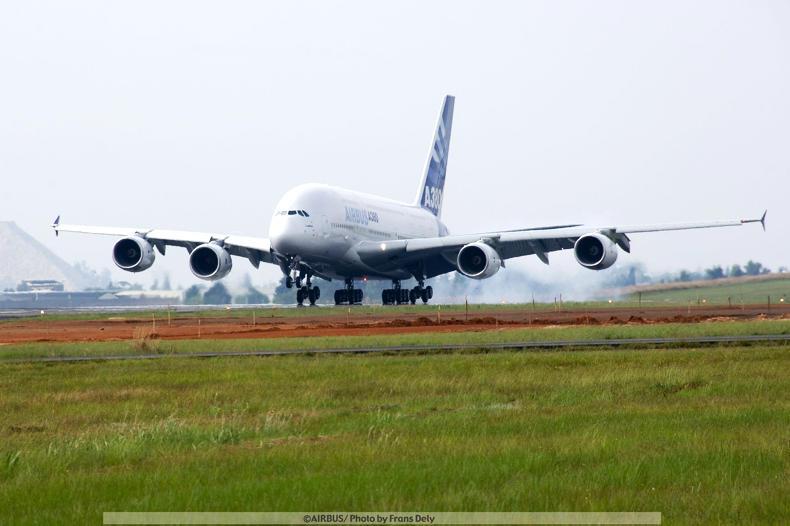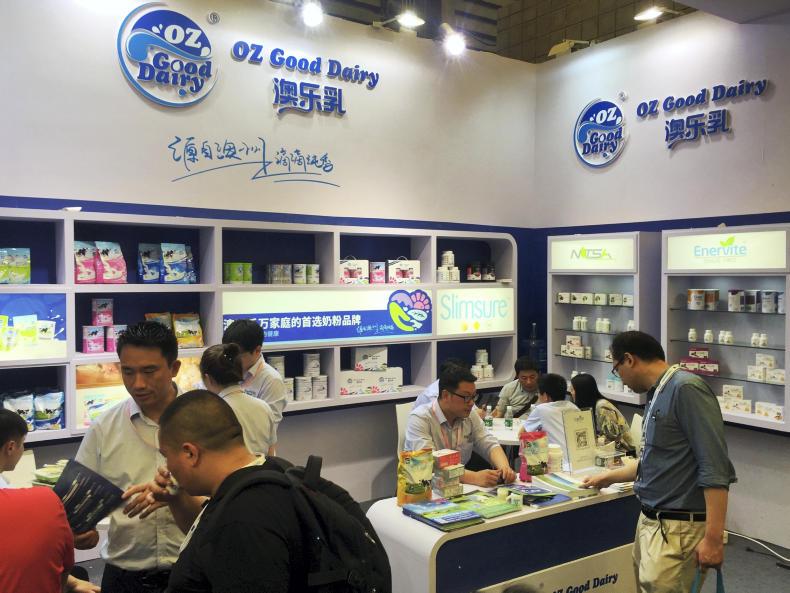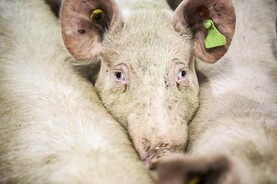Milk prices set to rise? At the moment there seems to be a real disconnect between the rising results of the GlobalDairyTrade auctions (GDT), low milk production in Australia and New Zealand, while strong Chinese demand continues and yet we have a weak EU market for dairy commodities.
Torsten Hemme, managing director of the IFCN Network, said all the market signals are pointing towards a shift upwards on milk price, at a global Dairy Industry Newsletter Conference in London last week. The German’s assumptions are based on the fact that the key drivers of milk price are supply and demand and, right now, supply is not strong. He said: “Let me summarise; supply is very weak, dairy stocks in storage are low, and I’m surprised that future markets are so relaxed. I would have expected them to see what is coming, which I think is demand outstripping supply.”

Torsten Hemme, IFCN, Germany.
Hemme said that the supply growth in New Zealand this year (farmers there are drying off cows now ) is less than was expected, the US is increasing milk produced, but only when you account for the increasing milk solids, and supply is down for both Russia and China. According to Hemme, the indications are milk price in the EU will have to move up soon.
Tensions high on an EU and US tariff war: a potential trade war between the US and Europe could have significant effects on dairy trade. Many farmers will have heard about the developing Airbus and Boeing trade war but many will ask what has a trade war on aeroplanes got to do with dairy?
The long and short of heightened tensions is the fact that the US is supposedly subsidising Boeing while the EU is supposedly subsidising Airbus. Each side is accusing the other of illegally subsidising its main aircraft makers.
US president Donald Trump’s administration said it would impose tariffs on $11bn (€9.7bn) in imports from the EU because it was supporting Airbus. The Office of the US Trade Representative said EU support for Airbus had caused “adverse effects” when announcing the new measures, which would target European goods including jetliners, cheese, wine and motorcycles.
So, as it stands, we don’t know if the tariff threats will come into force on Irish butter and cheese entering the US. It looks like this will depend on whether there will be an agreement between the EU and the US about the treatment of subsidies for the aviation industry.

A row between the EU and US on aeroplane subsidies could affect dairy trade.
Michael Dykes spoke at the conference representing the International Dairy Foods Association, the lobby for dairy processors in the US. He said the US is consumed with tariffs, tariffs and more tariffs. “We are all tied up with tariffs the same way the UK and EU is tied up with Brexit.”
He would not rule out the potential for auto tariffs or tariffs on food from the EU. He said: “We love your butter and we love your cheese and in any year we import about €1bn worth of butter and cheese, despite the fact we make a lot of cheese in the US. Our president is a bilateral type of operator so I don’t think this is just a rough patch. Be prepared for more of this tariff play.”
Will environmental restrictions affect future milk supply? A key question from the floor asked where the future is on alternative milk options for consumers and how the dairy industry can balance the argument on a negative image. A number of speakers fed into the answer. The first speaker pointed out that the best estimates suggest the number of people on a plant-based diet is 1% of the population in the US, and approximately the same in the EU.
Another speaker said we need to be clear on the carbon count on alternative diets and products and ensure we count the inputs into certain crops, etc. Torsten Hemme weighed into this debate also. He said: “The biggest dilemma is, we need a number on the carbon per gram of protein and it must be comparable protein. The quality of protein is a big issue. Our figures suggest dairy protein is 30% better-quality protein than soya for the person. Secondly, it might be lower carbon, but, on a litre-to-litre basis compared with almond milk there is half the nutritional value in a litre of almond milk.”
He said that dairy is often characterised as the number one climate killer but the facts are not saying this. “There is a study ongoing on the life cycle of milk and dairy production has a value of between 2% and 3% of all greenhouse gas emissions. However, the question is where do these emissions occur. We know 80% of them are created in emerging markets, yet we are attempting to reduce emissions in western Europe where we can have relatively little impact, so there is a wrong focus on doing the wrong actions. The focus should be on improving livestock in emerging countries,” he said.
In terms of the Chinese population, the projections are not looking good in overall births and in fact are already in decline
Will China continue as a large dairy importer? US analyst Eric Meyer gave a rundown of how the Chinese market is holding up for dairy. He said: “Long term, there is a risk that maybe the market might not prevail as good in the future. However, at the moment the risk is low. He said: “In terms of the Chinese population, the projections are not looking good in overall births and in fact are already in decline. There are one-third fewer births and if that brought around a hiccup with dairy demand then, yes, it is a risk.”
In the short to medium term, his thoughts were that demand would continue to be strong. He said: “They have 7% of the global land to feed 20% of the global population. As an industry, it is moving away from importing ingredients and is moving to importing finished goods such as cheese. It consumes 0.3kg per head of cheese which is very small but think of the population. If it moved to 1kg per head it would have massive impacts on the total cheese imports.”
Eric said there is currently a huge growth in cream usage in China – UHT cream, etc. Now that the Chinese are excited about cream, it is causing a bit of a stir on the butter market as China is pulling more fat away from other customers.
The other big issue for China at the moment is African swine fever in the pig herd, so with a huge decline (at least 20%) in sows, the demand for whey could be severely affected.
Will South America ever deliver dairy? Dairy consultant Monica Ganley, Quarterra, Argentina, gave the audience an overview on what was happening in the key dairy countries in South America. In summary not a whole lot is happening on increases in milk. While in theory it has a lot going for it, the reality is not much has changed.
The one country that seems to be showing some dairy pedigree is Chile. Production is up in Chile, while the rest (Brazil, Uruguay, etc) are all down. Ganley said: “Will we see recovery in dairy production? It depends on the weather, but probably yes. We have been in the throes of an El Niño and it has delivered really inconsistent rain so grasses in parts are excellent, but low quality. In other parts, there has been no rain at all.
“Milk prices are rising as volumes are down and costs are reducing as a large corn and soya harvest has started so grain is really cheap. Monica is nevertheless optimistic on future dairy growth in the region, suggesting South America has natural resources, good-quality land and plenty of farming know-how.
European milk prices set to rise.EU and US trade war could affect Irish trade in the US.Need to compare like with like when comparing milk with alternative juices.Population will still drive Chinese dairy demand.South American milk supply set to recover. Read more
Farm milk price signals looking good
Bergin outlines Glanbia growth vision in London
Milk prices set to rise? At the moment there seems to be a real disconnect between the rising results of the GlobalDairyTrade auctions (GDT), low milk production in Australia and New Zealand, while strong Chinese demand continues and yet we have a weak EU market for dairy commodities.
Torsten Hemme, managing director of the IFCN Network, said all the market signals are pointing towards a shift upwards on milk price, at a global Dairy Industry Newsletter Conference in London last week. The German’s assumptions are based on the fact that the key drivers of milk price are supply and demand and, right now, supply is not strong. He said: “Let me summarise; supply is very weak, dairy stocks in storage are low, and I’m surprised that future markets are so relaxed. I would have expected them to see what is coming, which I think is demand outstripping supply.”

Torsten Hemme, IFCN, Germany.
Hemme said that the supply growth in New Zealand this year (farmers there are drying off cows now ) is less than was expected, the US is increasing milk produced, but only when you account for the increasing milk solids, and supply is down for both Russia and China. According to Hemme, the indications are milk price in the EU will have to move up soon.
Tensions high on an EU and US tariff war: a potential trade war between the US and Europe could have significant effects on dairy trade. Many farmers will have heard about the developing Airbus and Boeing trade war but many will ask what has a trade war on aeroplanes got to do with dairy?
The long and short of heightened tensions is the fact that the US is supposedly subsidising Boeing while the EU is supposedly subsidising Airbus. Each side is accusing the other of illegally subsidising its main aircraft makers.
US president Donald Trump’s administration said it would impose tariffs on $11bn (€9.7bn) in imports from the EU because it was supporting Airbus. The Office of the US Trade Representative said EU support for Airbus had caused “adverse effects” when announcing the new measures, which would target European goods including jetliners, cheese, wine and motorcycles.
So, as it stands, we don’t know if the tariff threats will come into force on Irish butter and cheese entering the US. It looks like this will depend on whether there will be an agreement between the EU and the US about the treatment of subsidies for the aviation industry.

A row between the EU and US on aeroplane subsidies could affect dairy trade.
Michael Dykes spoke at the conference representing the International Dairy Foods Association, the lobby for dairy processors in the US. He said the US is consumed with tariffs, tariffs and more tariffs. “We are all tied up with tariffs the same way the UK and EU is tied up with Brexit.”
He would not rule out the potential for auto tariffs or tariffs on food from the EU. He said: “We love your butter and we love your cheese and in any year we import about €1bn worth of butter and cheese, despite the fact we make a lot of cheese in the US. Our president is a bilateral type of operator so I don’t think this is just a rough patch. Be prepared for more of this tariff play.”
Will environmental restrictions affect future milk supply? A key question from the floor asked where the future is on alternative milk options for consumers and how the dairy industry can balance the argument on a negative image. A number of speakers fed into the answer. The first speaker pointed out that the best estimates suggest the number of people on a plant-based diet is 1% of the population in the US, and approximately the same in the EU.
Another speaker said we need to be clear on the carbon count on alternative diets and products and ensure we count the inputs into certain crops, etc. Torsten Hemme weighed into this debate also. He said: “The biggest dilemma is, we need a number on the carbon per gram of protein and it must be comparable protein. The quality of protein is a big issue. Our figures suggest dairy protein is 30% better-quality protein than soya for the person. Secondly, it might be lower carbon, but, on a litre-to-litre basis compared with almond milk there is half the nutritional value in a litre of almond milk.”
He said that dairy is often characterised as the number one climate killer but the facts are not saying this. “There is a study ongoing on the life cycle of milk and dairy production has a value of between 2% and 3% of all greenhouse gas emissions. However, the question is where do these emissions occur. We know 80% of them are created in emerging markets, yet we are attempting to reduce emissions in western Europe where we can have relatively little impact, so there is a wrong focus on doing the wrong actions. The focus should be on improving livestock in emerging countries,” he said.
In terms of the Chinese population, the projections are not looking good in overall births and in fact are already in decline
Will China continue as a large dairy importer? US analyst Eric Meyer gave a rundown of how the Chinese market is holding up for dairy. He said: “Long term, there is a risk that maybe the market might not prevail as good in the future. However, at the moment the risk is low. He said: “In terms of the Chinese population, the projections are not looking good in overall births and in fact are already in decline. There are one-third fewer births and if that brought around a hiccup with dairy demand then, yes, it is a risk.”
In the short to medium term, his thoughts were that demand would continue to be strong. He said: “They have 7% of the global land to feed 20% of the global population. As an industry, it is moving away from importing ingredients and is moving to importing finished goods such as cheese. It consumes 0.3kg per head of cheese which is very small but think of the population. If it moved to 1kg per head it would have massive impacts on the total cheese imports.”
Eric said there is currently a huge growth in cream usage in China – UHT cream, etc. Now that the Chinese are excited about cream, it is causing a bit of a stir on the butter market as China is pulling more fat away from other customers.
The other big issue for China at the moment is African swine fever in the pig herd, so with a huge decline (at least 20%) in sows, the demand for whey could be severely affected.
Will South America ever deliver dairy? Dairy consultant Monica Ganley, Quarterra, Argentina, gave the audience an overview on what was happening in the key dairy countries in South America. In summary not a whole lot is happening on increases in milk. While in theory it has a lot going for it, the reality is not much has changed.
The one country that seems to be showing some dairy pedigree is Chile. Production is up in Chile, while the rest (Brazil, Uruguay, etc) are all down. Ganley said: “Will we see recovery in dairy production? It depends on the weather, but probably yes. We have been in the throes of an El Niño and it has delivered really inconsistent rain so grasses in parts are excellent, but low quality. In other parts, there has been no rain at all.
“Milk prices are rising as volumes are down and costs are reducing as a large corn and soya harvest has started so grain is really cheap. Monica is nevertheless optimistic on future dairy growth in the region, suggesting South America has natural resources, good-quality land and plenty of farming know-how.
European milk prices set to rise.EU and US trade war could affect Irish trade in the US.Need to compare like with like when comparing milk with alternative juices.Population will still drive Chinese dairy demand.South American milk supply set to recover. Read more
Farm milk price signals looking good
Bergin outlines Glanbia growth vision in London








 This is a subscriber-only article
This is a subscriber-only article










SHARING OPTIONS: